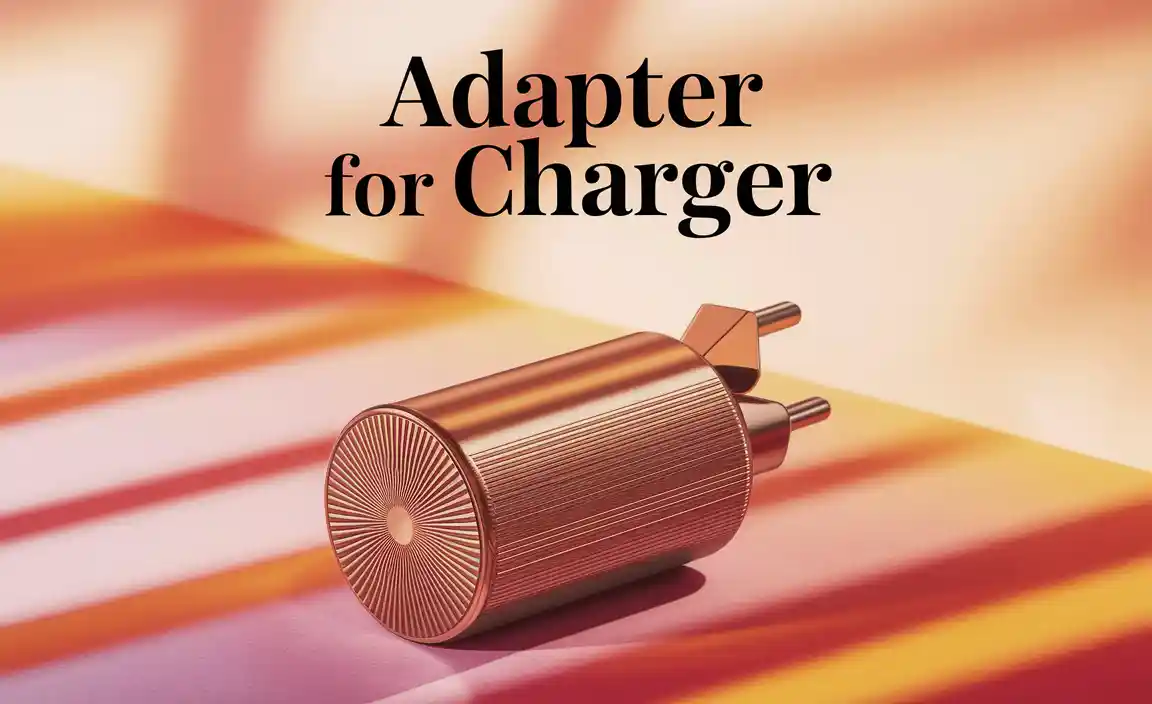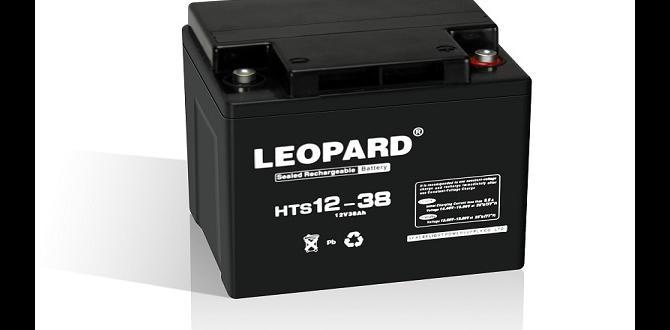To keep your ADT motion sensor working perfectly, replacing the battery is an essential upgrade. Using the right battery ensures reliable security and quick alerts. It’s a simple fix that brings peace of mind.
ADT motion sensors are a key part of your home security, silently watching over your space. But like any device, they need power to do their job. When the battery starts to fade, you might miss important alerts, or worse, your system could be less effective when you need it most. This can be frustrating, especially when you rely on that extra layer of safety. Don’t worry, though! Replacing the battery is usually a straightforward process that almost anyone can do. We’re here to guide you through it, step by step, so you can get your sensor back to full power with confidence. Let’s dive in and make sure your home is secure!
Why Your ADT Motion Sensor Battery Matters
Think of your ADT motion sensor’s battery as its heart. Without a healthy, fresh battery, it can’t perform its crucial function: detecting movement and sending a signal to your ADT system. When a battery is low, the sensor might still work, but it becomes unreliable. It could send false alarms, fail to detect actual movement, or simply stop communicating altogether. This defeats the purpose of having a security system in the first place!
ADT uses these motion sensors to create a protective zone around your home. They help your system understand if there’s an unexpected presence when the alarm is armed. A dying battery means those eyes and ears are going blind and deaf, leaving potential gaps in your security coverage. Regularly checking and replacing these batteries is a small step that makes a big difference in maintaining the integrity of your ADT system.
Signs Your ADT Motion Sensor Battery Needs Replacing
Your ADT system is designed to let you know when something needs attention, and low batteries are no exception. Paying attention to these signals can save you a lot of potential issues down the line. Here are the common signs:
- Trouble Lights or Beeps: Most ADT systems will alert you when a sensor has a low battery. This might be a specific trouble light on your main control panel, a series of beeps, or a notification on your ADT app. Don’t ignore these warnings!
- System Error Messages: Your ADT app or control panel might display a direct message indicating a “low battery” on a specific motion sensor.
- Sensor Not Responding: If you notice that a specific motion sensor isn’t registering movement or isn’t arming/disarming correctly with the rest of your system, a weak battery is often the culprit.
- False Alarms: While not always the case, a failing battery can sometimes lead to erratic behavior, including false triggers.
- Aging Batteries: Even if you don’t see obvious signs, it’s good practice to replace batteries proactively. Batteries have a lifespan, and knowing when it’s generally time is key.
Choosing the Right Battery for Your ADT Motion Sensor
This is where many people get a little stuck, but it’s actually quite simple once you know what to look for. Using the exact right battery is crucial for your sensor to function correctly and reliably.
ADT motion sensors, depending on the specific model, typically use small, coin-cell or cylindrical batteries. The most common types are:
- CR2032: This is a very common 3-volt lithium coin cell battery. It’s flat, round, and about the size of a nickel.
- CR123A or CR17345: These are slightly larger, cylindrical lithium batteries, often used in more power-hungry devices.
- AAA or AA Alkaline: Some older or specific models might use standard alkaline batteries.
How to Identify Your Sensor Model and Battery Type
The easiest and most reliable way to know for sure is to check the sensor itself or your ADT equipment manual. Here’s how:
- Locate the Sensor: Find the motion sensor that needs a new battery.
- Examine the Sensor Casing: Gently open the sensor’s cover. This usually involves a small slot where you can insert a flathead screwdriver or even your fingernail to pry it open. Be gentle!
- Look for Battery Information: Inside, you should see the battery compartment. The type of battery will often be printed directly on the sensor’s circuit board near the battery holder, or on the battery itself.
- Check Your ADT Manual: If you have your ADT equipment manual handy, you can look up your specific motion sensor model. The manual will list the exact battery type required.
- Consult ADT Support: If you’re still unsure, the best and most reliable source is ADT customer support. They can look up your system and tell you precisely which battery you need.
Important Note on Battery Brands: While you can often find generic or store-brand batteries, it’s generally recommended to use reputable brands like Duracell, Energizer, or Panasonic for critical devices like security sensors. These often offer better longevity and reliability. Always opt for lithium-ion batteries when specified, as they last longer and perform better in varying temperatures than alkaline batteries.
Where to Buy ADT Motion Sensor Batteries
Once you know the battery type, you can find replacements at a variety of places:
- Electronics Stores: Stores like Best Buy often carry a wide range of coin cell and cylindrical batteries.
- Supermarkets and Big Box Stores: Your local Walmart, Target, or grocery store will usually have batteries in their electronics or checkout aisles.
- Drugstores: CVS, Walgreens, and similar pharmacies are also good spots for common battery types.
- Online Retailers: Amazon, eBay, and other online marketplaces offer a vast selection, often in multi-packs, which can be more cost-effective. Just ensure you’re buying from a reputable seller.
- Hardware Stores: Home Depot, Lowe’s, and other hardware stores often stock batteries for security systems and electronics.
When buying, consider purchasing a multi-pack if using common batteries like CR2032 or CR123A. This ensures you have spares on hand for other devices or for the next time your ADT sensors need attention. For example, you can find CR2032 batteries from trusted brands in packs of 5, 10, or even more online, offering a convenient and economical solution.
How to Replace the Battery in Your ADT Motion Sensor (Step-by-Step)
Replacing the battery in your ADT motion sensor is usually a simple DIY task. Here’s a detailed guide to help you through it safely and effectively.
Tools You Might Need:
For most ADT motion sensors, you won’t need many tools. However, having these on hand can make the process smoother:
- New Battery: The correct type and brand of battery for your sensor.
- Small Flathead Screwdriver or Plastic Pry Tool: For opening the sensor’s casing. Some sensors have a small notch for this.
- Soft Cloth or Paper Towel: To clean any dust from the sensor’s internal components or battery compartment.
- Your ADT System Keypad or App: To acknowledge system changes or bypass zones if necessary (though often not required for just battery changes).
Step-by-Step Replacement Process:
-
Disarm Your ADT System: This is the most important safety step. Before you touch any part of the sensor, disarm your alarm system from the keypad or your ADT app. This prevents a potential alarm event when you open the sensor.
-
Locate the Sensor: Find the specific motion sensor you need to service.
-
Open the Sensor Casing:
- Most ADT motion sensors have a small slot or a seam along the edges of the casing.
- Carefully insert the tip of a small flathead screwdriver or a plastic pry tool into this slot.
- Gently twist or pry to release the clips holding the cover in place. Work your way around the edge if needed.
- Some sensors might have a small screw at the back; check for this first and remove it if present.
- Be patient and don’t force it. You want to avoid breaking the plastic.
-
Remove the Old Battery:
- Once the cover is off, you’ll see the battery.
- Most coin-cell batteries can be popped out with a fingernail or by gently prying them up with your screwdriver/pry tool.
- For cylindrical batteries, they might slide out or have a clip holding them in place.
- Note the orientation of the battery (which side is + and which is -) before removing it, though the new one will likely only fit one way.
-
Clean the Battery Compartment (Optional but Recommended):
- Use a dry, soft cloth or paper towel to wipe away any dust or debris from the battery terminals and the inside of the compartment.
- Ensure the contacts are clean and free of corrosion. If you see any white powdery residue, it might be battery leakage, and you should clean it carefully (a pencil eraser can sometimes help with mild corrosion, or a cotton swab with a tiny bit of isopropyl alcohol, ensuring it dries completely).
-
Insert the New Battery:
- Take your new, correct battery.
- Align it according to the polarity markings (+ and -) inside the compartment. The positive (+) side is usually indicated with a plus sign and is often the larger, flatter side of a coin cell.
- Gently press the new battery into place. It should fit snugly.
Example shown with a CR2032 battery:
Battery Type Voltage Common Uses ADT Sensor Models (Examples) CR2032 3V Key fobs, small remotes, calculators, ADT sensors ADT 65-266, ADT PPA-230, various wireless door/window/motion sensors CR123A (or CR17345) 3V Cameras, high-drain flashlights, larger ADT sensors ADT Command Motion Sensor (some versions) -
Close the Sensor Casing:
- Align the cover with the base of the sensor.
- Gently press along the edges until it snaps securely back into place.
- If you removed a screw, reinsert and tighten it.
-
Re-arm Your System: Once the sensor is closed and secured, re-arm your ADT system. The system should recognize the new battery and clear any low battery warnings.
-
Test the Sensor: To be completely sure it’s working, arm your system again (staying within the entry/exit delay or ensuring you have a way to disarm it quickly). Walk in front of the motion sensor to trigger it while the alarm is armed. You should hear your system beep or register the motion. Then, disarm the system. If it works, you’re good to go!
What to Do If the Sensor Still Shows a Low Battery
If your ADT system continues to signal a low battery after replacing it, don’t panic. Here are a few troubleshooting steps:
- Check Battery Installation: Ensure the battery is seated correctly and making good contact with the terminals. Try removing and re-inserting it.
- Verify Battery Type: Double-check that you used the exact battery model recommended by ADT. Using an incorrect type can sometimes cause issues.
- Test the New Battery: Although new, a battery can sometimes be faulty or drained if it’s old stock. If possible, test the new battery with a battery tester or try a different new battery.
- Clean Terminals: Re-clean the battery terminals with a soft cloth.
- Check for Damage: Inspect the sensor for any physical damage that might be affecting its operation.
- Contact ADT Support: If none of these steps resolve the issue, it might be time to contact ADT. There could be a communication problem with the sensor or the sensor itself might be failing. They can help diagnose further or schedule a technician visit.
Battery Life and Maintenance Tips
Understanding how long your ADT motion sensor batteries last and how to care for them can save you hassle and ensure consistent protection.
Expected Battery Lifespan
The lifespan of a battery in an ADT motion sensor can vary significantly. Factors influencing how long it lasts include:
- Battery Quality: Higher-quality batteries from reputable brands tend to last longer than cheaper alternatives.
- Usage/Activity: Sensors that detect movement frequently (e.g., in high-traffic areas) will drain their batteries faster than those in quieter rooms.
- Environmental Conditions: Extreme temperatures (very hot or very cold) can affect battery performance and lifespan.
- Sensor Model: Different ADT sensor models have varying power requirements.
- Signal Strength: A weak or intermittent signal between the sensor and the ADT control panel can cause the sensor to work harder, thus using more battery power.
Generally, you can expect most ADT motion sensor batteries to last anywhere from 1 to 3 years. Some might last even longer, while others in very active environments might need replacement sooner.
Proactive Battery Replacement Schedule
To avoid unexpected dead batteries and potential security gaps, a proactive replacement schedule is a smart move. Here’s what to consider:
- Set a Calendar Reminder: Once you’ve replaced a battery, mark your calendar for 1.5 to 2 years from that date. This gives you ample time to buy new batteries before the old ones are likely to fail.
- Coordinate with Other Maintenance: Many recommend changing smoke detector batteries annually. You can often tie your motion sensor battery checks into this routine.
- System Check-ups: If ADT performs any professional maintenance on your system, ask them to check the battery levels of your sensors.
Even if your system doesn’t explicitly alert you to a low battery, replacing them on a schedule can provide peace of mind. For instance, around the two-year mark, it’s often wise to preemptively swap out batteries in sensors that are in critical locations or known to be power-hungry.
Environmental Considerations
Where your motion sensor is located plays a role in battery life:
- Temperature Fluctuations: Sensors installed near doors or windows that are frequently opened, or in unconditioned spaces like garages or attics, can experience greater temperature swings. Cold temperatures, in particular, can temporarily reduce battery voltage and performance.
- Humidity: While less common as a primary cause for battery failure, very high humidity can potentially lead to corrosion over extended periods if the sensor casing isn’t perfectly sealed.
If many of your sensors are in areas with extreme temperatures, you might find yourself replacing batteries slightly more often than the average. It’s worth noting that lithium batteries, like the CR2032 and CR123A, generally perform better in cold weather than alkaline batteries.
Frequently Asked Questions (FAQ)
How often should I replace the battery in my ADT motion sensor?
Typically, ADT motion sensor batteries last between 1 to 3 years. It’s a good practice to check for low battery alerts from your ADT system regularly and consider replacing them proactively every 1.5 to 2 years to ensure consistent security.
What type of battery does my ADT motion sensor use?
The most common batteries are the 3-volt lithium coin cells like the CR2032, or slightly larger cylindrical batteries like the CR123A. Some older or specific models might use standard AAA or AA alkaline batteries. Always check the sensor itself or




